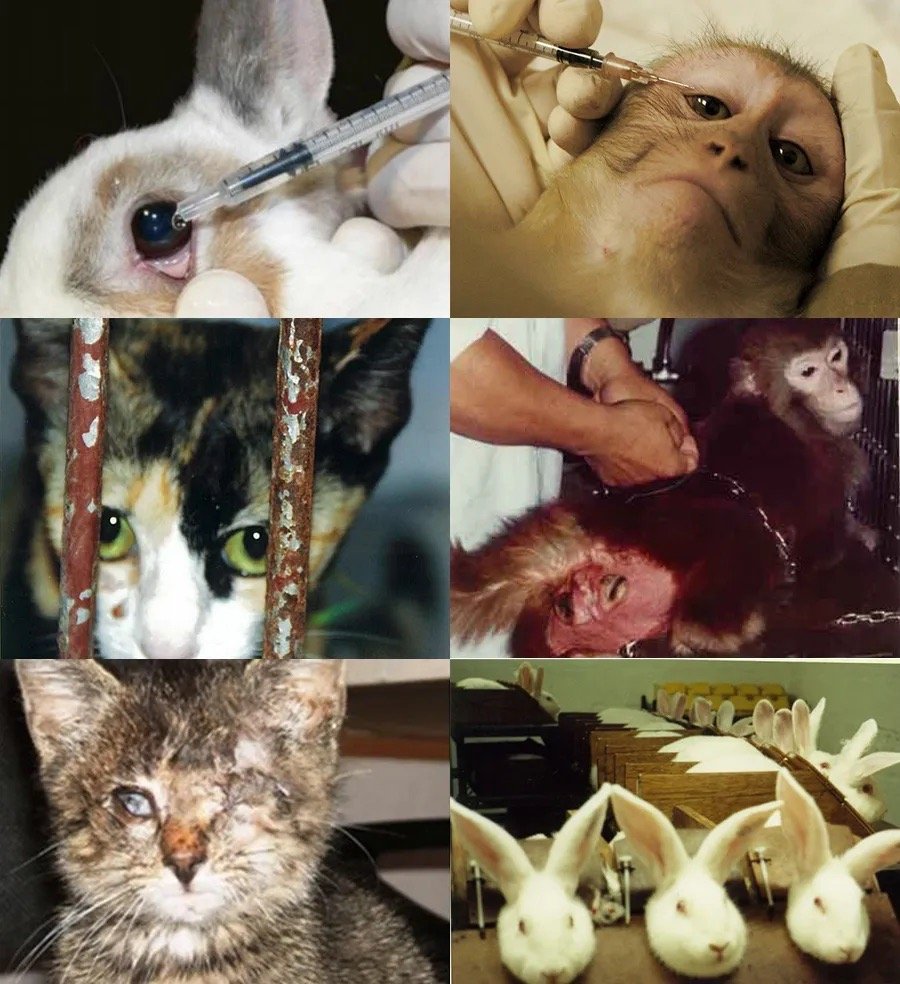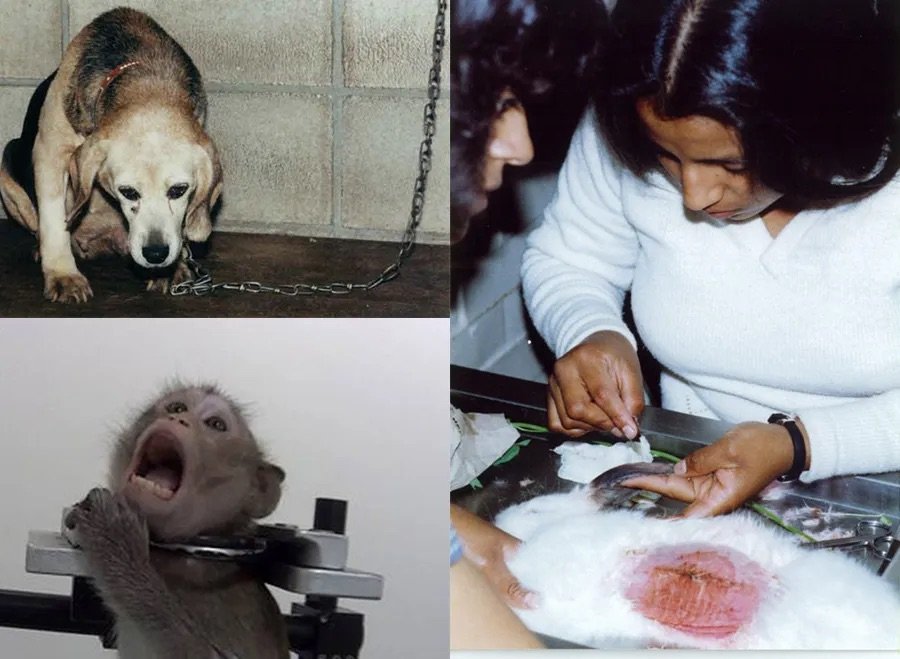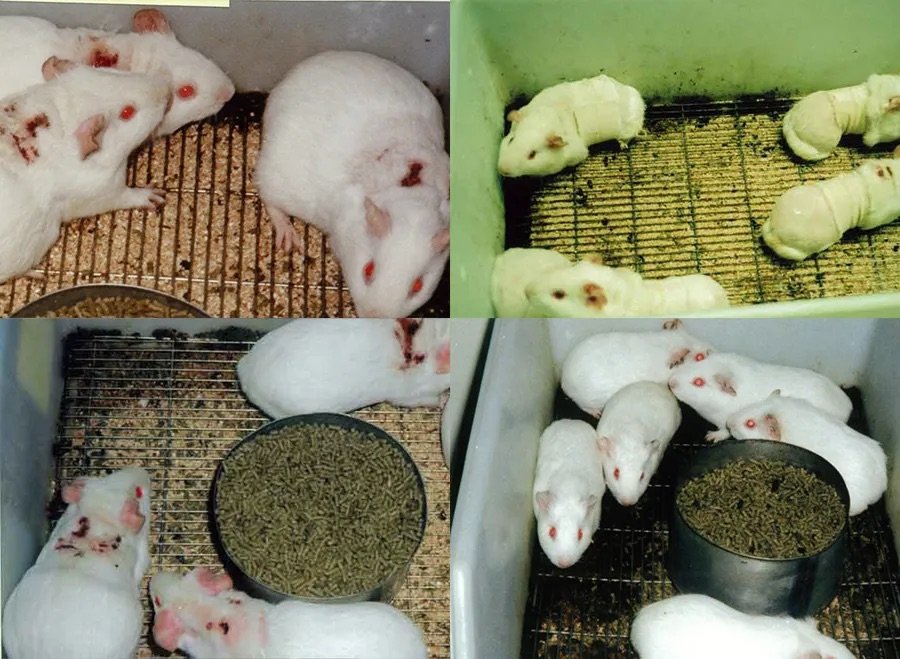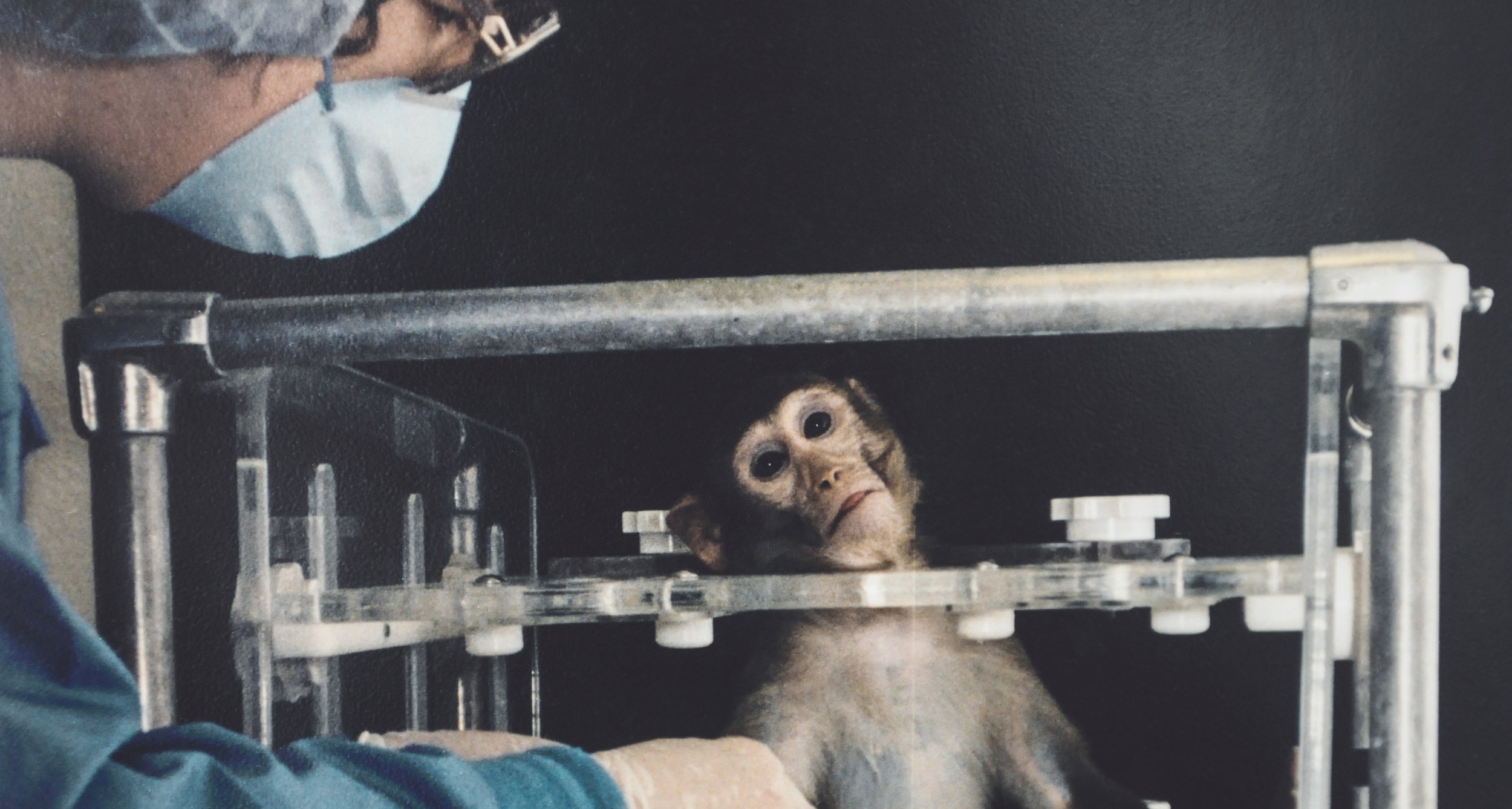
CRUELTY FREE
FIGHT ANIMAL TESTING •
FIGHT ANIMAL TESTING •
“Wearing cosmetics that were tested on animals makes you ugly on the inside.”
Ricky Gervais

HOW MUCH DOES YOUR MAKE-UP HURT?
-
In 2020 another one of our outdoor campaigns started, under the slogan "How much does your make-up hurt?" , marking the beginning of an intense campaign against animal testing for cosmetic purposes.
Our billboards, city lights and LED screens could be seen at 30 locations around Bosnia and Herzegovina in Sarajevo, Tuzla, Zenica and Mostar. By purchasing products tested on animals, you are funding the continuation of this cruel and unnecessary practice.
FIRST CONFERENCE ON HUMAN INNOVATIONS IN EDUCATION
“Ibrahim Arautović”
-
During the conference on humane innovations in education "Ibrahim Arnautović", which was held on October 30 and 31, 2020, a contract was solemnly signed, along with a press conference, between the Organization for Animal Rights and the Environment EVA, Doctors Against Animal Experiments, InterNICHE on the one hand and the Faculty of Veterinary Medicine in Sarajevo on the other hand. With this contract modern equipment is donated to the faculty, so it can replace the painful use of animals in education and by that become the first cruelty free faculty in Bosnia and Herzegovina.
In 2003, Dr. Ibrahim Arnautović received a prestigious award from InterNICHE for the creation of an alternative model, which was presented at many international and world congresses.
Thanks to the signed contract and the donation of a 3D printer by the Organization EVA to the Faculty of Veterinary Medicine, the faculty stops using animals for educational purposes, and focuses more on the use of alternative models, in order to better prepare students for working with animals. This faculty has previously in many cases replaced experiments on animals, many alternative software and models made in the workshop, within the faculty. Among other things, a 3D printer, synthetic frogs, virtual canine anatomy, and an alternative dog with a multitude of functions were borrowed for a year.
During the conference, various types of alternative models and softwares were presented that can replace the painful use of animals for every discipline and type of study in natural sciences. Alternatives have improved beyond our imagination over the past 30 years and are there to help us achieve the same medical goals but without pain inflicted on animals.
Alternatives have proven to be of better quality than using animals, in the experience of many universities in the world, because students have countless additional opportunities to practice their knowledge.
SECOND CONFERENCE ON HUMAN INNOVATIONS IN EDUCATION
“Ibrahim Arnautović”
-
At the second Conference on human innovations in education "Ibrahim Arnautović" with international participation, held on 12-13 November 2021, various types of alternative modules, softwares and others were presented, that replace the painful use of animals for every discipline and type of biomedical studies, given that the alternatives have been developed in the past 30 years.
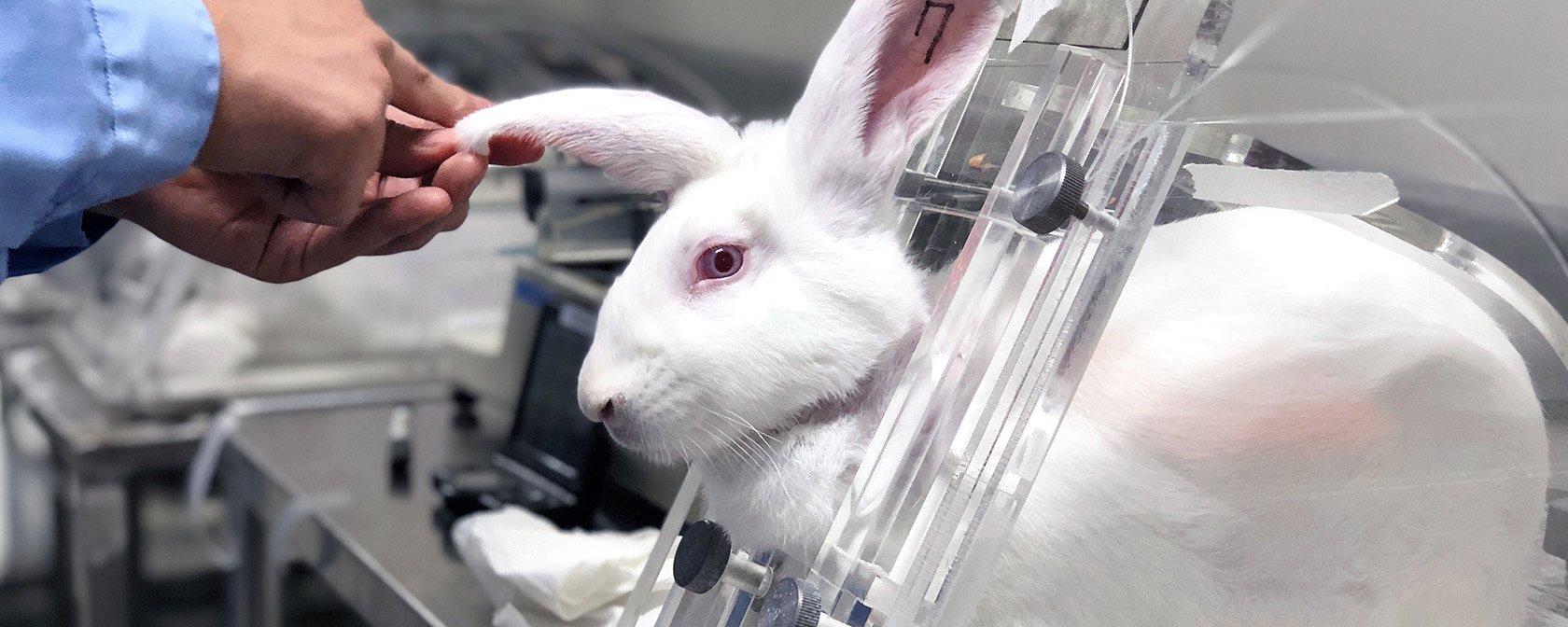
When someone tells you that a product is tested on animals, what's the first thing that comes to your mind?
The bunny smeared with some kind of cream?
That the mouse is wearing makeup?
DRAIZE TEST
The Draize test is an acute ocular toxicity test devised in 1944 to provide a method for assessing the irritation potential of materials that might accidentally come in contact with human eyes, such as household and office products, agricultural or environmental chemicals, and volatile organic compounds. Because of the widespread acceptance of this method, it was later adopted for testing eye care products and drugs designed specifically for topical ophthalmic use prior to marketing. The current Draize method involves the instillation of 10 µL of a test liquid (or 10 mg of a test solid) into the lower conjunctival cul-de-sac, followed by a saline rinse. Observations of various criteria (i.e., corneal opacity and area of corneal involvement, conjunctival hyperemia, chemosis, ocular discharges, and iris abnormalities) are taken at predefined intervals: 1 hour, 24 hours, 48 hours, 72 hours, 7 days, and 21 days after administration. The test is usually performed in rabbits due to their large eyes, well-described anatomy, ease of handling, relatively low cost, and ready availability.
Animal experiments
To determine the hazard of a single short-term exposure to a product or chemical, the substance is administered to animals (usually rodents) in extremely high doses via forced feeding, forced inhalation, and/or eye or skin contact. Groups of animals with the highest-dose often suffer severe abdominal pain, diarrhea, convulsions, seizures, paralysis, or bleeding from the nose, mouth, or genitals before finally dying or being killed.
Acute toxicity testing began during the World War I era with the infamous 50 percent lethal dose (LD50) test, which remains a common animal poisoning study today. In this test, groups of animals are force-fed with the increasing amounts of the test substance, or increasing amounts are applied to the skin until half of the animals die. Despite decades of use, the LD50 test and its more modern adaptations have never been scientifically validated to confirm that their results truly predict chemical effects on humans. One international study examining the results of rat and mouse LD50 tests for 50 chemicals found that these tests predicted human toxicity with only 65 percent accuracy—while a series of human cell line tests were found to predict human toxicity with 75 to 80 percent accuracy.
SKIN SENSITIVITY TEST
The Guinea pig maximisation test (GPMT) is an in vivo test to screen for substances that cause human skin sensitisation (i.e. allergens). It was first proposed by B. Magnusson and Albert Kligman in 1969 and described in their 1970 book Allergic Contact Dermatitis in the Guinea Pig. This test can cause itching, inflammation, ulceration of the guinea pig's skin. This reaction is further enhanced by the use of auxiliaries, which increase the body's immune response.
In some sectors, GPMT has been largely replaced by the mouse local lymph node assay (LLNA), in which a test substance is applied to the ears of mice, which ultimately die, so that the lymph node near the ear can be removed and the immune response of the mice measured. The number of lymphocytes isolated from the lymph node is then used as a measure of skin sensitization. Although this test uses fewer animals and requires less time to perform, better alternatives have been developed than these outdated animal tests.
BOTOX TEST
Although the main ingredient of botox comes from the bacteria, testing botox is not "cruelty free", since it's tested on animals.
The standard procedure is a classic LD 50 test. Groups of mice are injected with different doses of Botox in the abdomen. The LD50 test causes substantial pain and suffering for the mice. The animals undergo paralysis, impaired vision and respiratory distress. After three or four days of suffering they finally die from suffocation.
Approximately 100 mice are being used to test each batch of botulinum toxin products. According to projections, 600,000 mice die each year for the three leading companies Allergan, Merz and Ipsen. These figures don't even account for other botox producers, for instance in Asia, so that one must assume that the actual number of animals is much higher. Due to the continually high demand for botox, the number of mice killed will also continue to rise.
